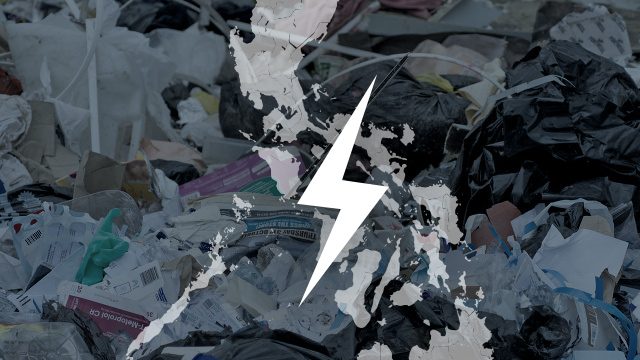SUMMARY
This is AI generated summarization, which may have errors. For context, always refer to the full article.

MANILA, Philippines – It was in his first State of the Nation Address when President Rodrigo Duterte first revealed his plan to explore the adoption of appropriate waste-to-energy facilities in the country.
Following his speech, different environment groups quickly called on the President to reconsider this plan since “incinerators masquerading as [waste-to-energy] are false and expensive solutions to the garbage problem.”
Waste incineration is banned under Philippine laws, such as the Philippine Clean Air Act and the Ecological Solid Waste Management Act, but advocates believe companies are still trying to sell incinerators in the country up to this day.
“Despite the incineration ban in the Clean Air Act, there are many companies that are coming to the Philippines, trying to sell incinerators, but they’re doing it by calling it different names, like ‘waste-to-energy,'” Jorge Emmanuel, a professor at Silliman University, told Rappler on Wednesday, January 25.
“But when you look at the technology behind it, many of the technologies are simply the standard incinerator, with the addition of heat recovery boiler or some type of heat recovery,” he added.
Emmanuel, a scientist who specializes in environment, renewable energy, public health, and climate change, is one of the speakers during the 13th Zero Waste International Conference held at the University of the Philippines Bahay ng Alumni.
The Philippines is also celebrating the National Zero Waste Month this January. (READ: To burn trash or not to? Debate in PH rages on)
On Wednesday, he gave an overview of the problem with incineration and waste-to-energy technologies, while 3 international speakers shared solutions and stories from United States, Europe, and China.
Speaking to Rappler after the event, Emmanuel urged Filipinos to solve its garbage problem by going zero waste instead of using waste-to-energy technologies that use high temperature to burn waste and generate electricity or other forms of energy.
“The problem is that waste-to-energy plants produce some of the most toxic materials known to humans, so by using waste-to-energy, we are releasing these materials, substances called dioxins that stay in the environment for hundreds and hundreds of years, that are toxic at very small concentrations, very tiny concentrations,” Emmanuel explained.
He added: “And that can cause different types of cancers, different reproductive disorders in men and women, impacts on our children in their development, birth defects – all of these have been associated, linked to these dioxins at very small levels.”
On Wednesday, he expressed his “strong concern” about “Japanese, Australian, and French firms making the rounds, talking to a lot of [local government units] to sell these waste-to-energy technologies.”
He believes the Philippines does not have the technical capability to test dioxin levels emitted by waste-to-energy technologies.
“It took the United States decades to develop the full capacity to do it, where they can do it precisely and reliably…. In the Philippines, we don’t, as far as I know, even have any [laboratory] that has international accreditation, so how can we validate what a vendor will claim, that their technology doesn’t produce high levels of dioxin?” Emmanuel said.
He said he has seen companies sell waste-to-energy technologies in countries in Asia and Africa, even if they didn’t pass the test in their own host countries.
“That’s because many of these countries [in Asia and Africa] could not really validate it on their own. In addition to that, once the technology’s installed, how can you monitor it on a continuous basis when we have a hard time even doing one test of these dioxins? So we are not in the position to protect health and environment,” he added.
The cost of these waste-to-energy technologies is also “extremely high,” Emmanuel said, since they come with air pollution control equipment.
“The danger is many of the vendors try to underutilize, sometimes they even minimize the design to reduce the cost so they can make more money or to make it affordable to a developing country, and yet those are substandard technologies,” he added.
Renewable energy
Aside from going zero waste and fully implementing ecological solid waste management, Emmanuel proposed another alternative path to incineration and waste-to-energy technologies: a shift to clean renewable energy.
“The nice thing about the Philippines is that we’re blessed with tremendous solar, wind, wave, geothermal power, or the potential for those, and so those are the…renewable sources of energy that we need to move into not only because they are cleaner and better for the environment, but they also address the global issue of global warming, and we have such a huge potential for it in this country,” he told Rappler.
Take, for example, wave energy. Emmanuel said this is a new area that the Philippines needs to explore since it could provide energy to coastal communities.
“So what I’m calling for is the move towards renewables, but also move towards looking at clean energy storage to allow us to supplement cleaner power like geothermal, which can provide baseload with intermittent power, like solar or wind or wave…. Let’s look at this instead of bringing technologies that will harm our health, harm our environment, for not only decades but hundreds of years to come,” he added.
His call comes just as Environment Secretary Gina Lopez recently expressed her “firm commitment” to approve in just two weeks applications for environmental compliance certificate of renewable energy projects. – Rappler.com
Add a comment
How does this make you feel?
There are no comments yet. Add your comment to start the conversation.